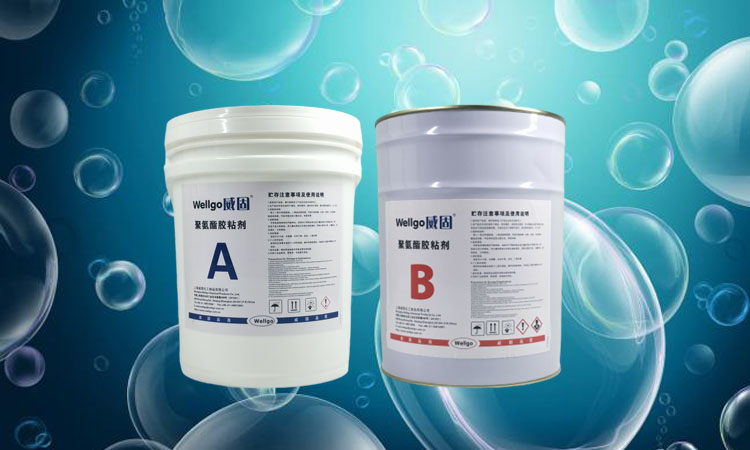PolyurethaneAdhesive‘sCatalyst is an additive that accelerates the reaction of polyurethane. In the synthesis of polyurethane and its raw materials, there are two commonly used catalysts, namely tertiary amine catalysts and organometallic compounds. There are many types of tertiary amines and organometallic compounds. Taking into account various factors in the actual production process of polyurethane, there are currently only 20of catalysts commonly used in factories.
There are many types of polyurethane catalysts with different catalytic activities and functions. In the production of polyurethane products, it must be based on the different raw materials and production methods And purpose and performance requirements, rationally select the catalyst. The following is the author did it for everyone A brief summary for reference only. In the actual production process of polyurethane, it is necessary to conduct repeated experiments according to its different processing conditions and performance requirements, and make appropriate catalyst selections based on experimental phenomena and conclusions.

1. Polyurethane soft block foam
Triethylenediamine, dimethyl Ethanolamine and bis(Dimethylaminoethyl) Ether is usually used to produce polyurethane soft blockslikeBubble. The recommended dosage is0.1-0.3(based on100mass parts of polyol, the same below), each catalyst can be used independently . But authorAfter many experiments, we came to the following conclusion: if two or more catalysts are mixed, the catalytic effect will be better.
Organotin catalysts commonly used in the production of polyurethane flexible slabstock foam include stannous octoate and dibutyltin disilicate. This catalyst must be dissolved in some plasticizer( Such as dioctyl phthalate, etc.)can only be used in . They can effectively accelerate the gelation of foam. The dosage of this type of catalyst should be Control it at the lower limit, otherwise the foam will shrink and crack due to rapid gelling.
For the production of polyester polyurethane flexible foam, the commonly used catalysts are N-ethylmorpholine, N , N’-dimethylpiperazine, N-Methoxymorpholine and its mixtures, the recommended dosage range is<fontFoam body
Polyurethane foam used for packaging is mostly less than 8kg/m³‘s low-density foam, the commonly used catalysts are hydroxyl-containing catalysts, such as dimethylethanolamine, etc. The dosage is0.3 ~0.5. The hydroxyl groups of this type of catalyst can react with isocyanate and enter the molecular structure of polyurethane, which can effectively reduce the residual odor of the catalyst.
5. Isocyanurate foam
Isocyanurate foam is a foam that makes full use of the trimerization reaction of isocyanate itself. Therefore, there are major differences between isocyanurate foam and ordinary polyurethane foam in structure, performance and equipment. Of course, the choice of catalyst is also quite special. Under normal circumstances, trimerization catalysts such as amines, organic metal salts and carboxylic acid quaternary ammonium salts can be used. Commonly used trimerization catalysts are2,4,6,-Three (N, N-Dimethylmethylamino)phenol and1,3,5,-Three ( N, N- Erjia Base-3-aminopropyl) symmetric hexahydrotriazine, etc. Since pure isocyanurate foam is brittle and has poor practicality, it is usually modified with polyol. The reaction speeds of urethane and isocyanurate are quite different. If ordinary isocyanurate foam is used, It is relatively difficult to use polyurethane catalysts to balance their reaction rates. Therefore, when preparing isocyanurate foam, organometallic carboxylates and amine catalysts are usually used to adjust them. Commonly used organometallic carboxylates include octanoic acid. Potassium, potassium acetate, etc.; in addition to the trimerization catalytic effect, the carboxylic acid quaternary ammonium salt also has a certain delayed catalytic effect.
6. RIMMicrocellular elastic foam
Reaction injection molding( RIM)Foam is a rapidly developing polyurethane product production technology with high production efficiency and adaptability to complex automobiles parts. The reactants are mixed under high pressure and then injected into a closed large complexmold, and then rapidly formed and demoulded. This process requires that the mixed materials must have excellent fluidity and be able to VeryFast‘sCure. Therefore, the key to the successful implementation of this production process is the correct selection of the type and amount of catalyst. According to the requirements of this production process, organotin–tertiary amine composite catalytic systems are widely used in Europe, such as triethylene di Composite catalytic system of amine and dibutyltin dilaurate, etc. The general dosage of the composite catalytic system is 0.1~0.5and0.015~0.05. Alkyl tin sulfate is often used as an organotin catalyst because it has a good delayed catalytic effect and is beneficial to the flow of mixed materials in complex mold cavities.
PolyurethaneAdhesiveThe selection of catalysts ends here. In the actual production process of the factory, small batch production must be carried out in advance according to different processing conditions and user requirements. Only after reasonable analysis of the production results can the appropriate catalyst be selected for mass production.
37px;”>PolyurethaneAdhesiveThe selection of catalysts ends here. In the actual production process of the factory, small batch production must be carried out in advance according to different processing conditions and user requirements. Only after reasonable analysis of the production results can the appropriate catalyst be selected and put into batches. Production.


